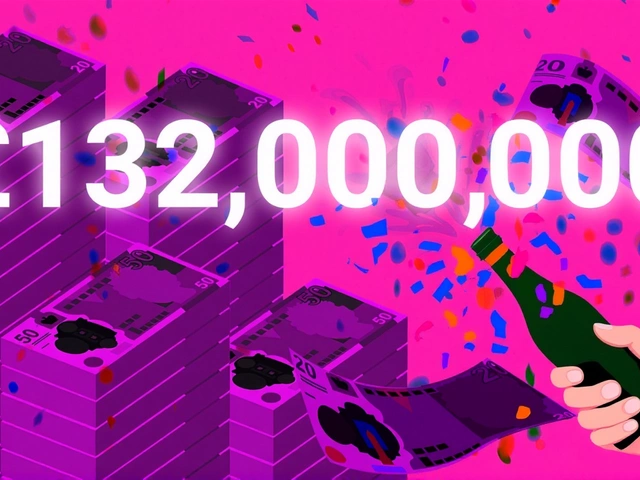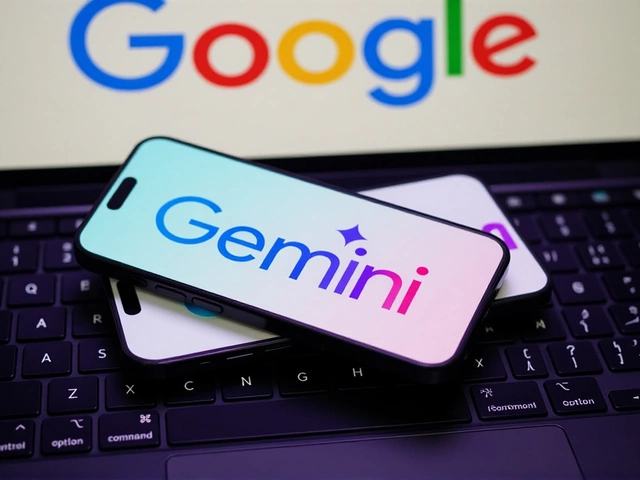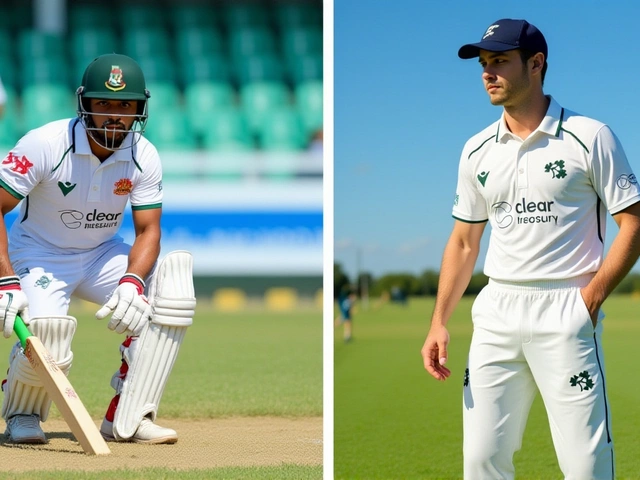The National Lottery website displayed results for a draw that hasn’t happened yet — and the numbers don’t add up. On Friday, November 14, 2025, according to their own page, National Lottery announced a £108,302,730 EuroMillions jackpot won by numbers 09, 26, 27, 45, 48 with Lucky Stars 08 and 09. But scroll down, and there it is: a giant, blinking banner screaming “£157M * Jackpot Get that EuroMillions feeling”. The math doesn’t close. The prize claimed in the results section is nearly £50 million less than the one they’re selling on the homepage. And no one’s explaining why.
Two Draws. One Month. No Logic.
Meanwhile, WeLoveLotto, a UK-based lottery results site headquartered in London, published details for a separate draw — this one on Tuesday, November 18, 2025. Numbers: 02, 04, 15, 21, 48. Lucky Stars: 06 and 12. Jackpot: €135 million. Zero winners. And yet, the prize breakdown was meticulous: six people won €122,146.50 each for matching five numbers and one star. Eight won €21,410.70. Over 1.2 million won €3.80 for matching just two main numbers. Total winners? 1,957,947. Raffle prizes? 100 winners of €500, another 1,000 of €50. It reads like a real draw. Except… it’s from the future.As of Wednesday, November 26, 2025, at 6:13 PM UTC, these are not past results. They’re predictions. Or fabrications. Or glitches. EuroMillions draws only happen on Tuesdays and Fridays. So how did two draws occur within four days of each other in November 2025? And why does one use pounds, the other euros? The EuroMillions consortium operates across nine countries — including the UK, France, Spain, and Belgium — so currency differences are normal. But two draws in one week? That’s not how it works.
The £157 Million Mirage
The most baffling part isn’t the future dates. It’s the marketing. The National Lottery website, operated by Camelot Group PLC since 1994, clearly lists the jackpot as £108.3 million in its official results. But the homepage, the banners, the pop-ups — all scream £157 million. That’s not a rounding error. That’s a £48.7 million gap. Either they’re advertising a future rollover that hasn’t been confirmed — or they’re misleading customers. There’s no footnote. No disclaimer. Just bold, glowing text that contradicts the data beneath it.When you click through to the draw details, you find specifics: Draw Machine 13. Ball Set 21. The kind of audit-ready detail regulators demand. It feels real. But then you see the £157M banner again. And you wonder: is this a glitch? A test? Or something more deliberate? The Camelot Group PLC hasn’t issued a statement. Not on Twitter. Not on their press page. Not even in their customer service FAQs.
Who’s Responsible for the Data?
WeLoveLotto isn’t a lottery operator. It’s a third-party aggregator. It pulls data from official sources. So how did it get a draw that doesn’t align with the National Lottery’s own schedule? Did someone feed it fake data? Did a system error push a test draw live? Or is this a coordinated leak? The site’s prize breakdown is too detailed to be random. The numbers are clean. The distribution matches historical patterns. But the date? Impossible.For context: EuroMillions jackpots roll over until someone wins. The last record was €190 million in 2022. £157 million — roughly €185 million — is plausible. €135 million? Also plausible. But two draws in one week? With different numbers, different currencies, different winners? That’s not how the system works. The draw machines are synchronized. The ball sets are tracked. The results are published simultaneously across all nine countries. There’s no room for two separate draws in a single week.

What Happens When Trust Breaks?
Lotteries thrive on trust. People buy tickets because they believe the system is fair, transparent, and predictable. When a site like the National Lottery shows one number and advertises another, it erodes that trust. When a third-party site publishes a future draw with impossible precision, it creates confusion. And when neither party explains it? That’s when rumors start. That’s when people stop buying. That’s when regulators step in.The UK Gambling Commission oversees the National Lottery. They’ve never intervened in a jackpot discrepancy like this. But if this isn’t corrected — and soon — they’ll have to. The £1 million UK Millionaire Maker win (code ZSC T91277) on November 14? That part checks out. It’s verifiable. But the rest? It’s a house of cards.
What’s Next?
The next official draw is scheduled for Friday, November 28, 2025. If the jackpot is still listed as £157 million — but the actual result is £108 million — the confusion will compound. Players will question whether their tickets are valid. Retailers will panic. Social media will explode. And the Camelot Group PLC will face mounting pressure to explain.For now, the only thing certain is this: the numbers on the screen don’t match the story they’re telling. And in a world where trust is the only currency that matters, that’s more dangerous than any unclaimed jackpot.
Frequently Asked Questions
Why does the National Lottery show £108 million in results but advertise £157 million?
The £108 million is the confirmed jackpot from Draw 1894 on November 14, 2025. The £157 million appears to be a projected rollover figure — possibly from a previous draw’s unclaimed prize — but it’s being presented as current without clarification. This misrepresents the actual prize pool and could mislead players into thinking the jackpot is higher than it is, violating advertising transparency rules under UK Gambling Commission guidelines.
How can WeLoveLotto show a draw on November 18, 2025, if EuroMillions only draws on Tuesdays and Fridays?
EuroMillions has never held two draws in one week. The November 18, 2025 draw reported by WeLoveLotto is chronologically impossible under current rules. The detailed prize breakdown suggests the data may have been generated from a test system or leaked internal simulation. No official EuroMillions source has confirmed this draw, and the date conflicts with the actual calendar, raising serious questions about data integrity.
Are the future-dated results evidence of a system hack?
While a hack can’t be ruled out, the more likely explanation is an internal data error — perhaps a staging server’s results were accidentally pushed to the live site. The precision of the prize tiers and equipment IDs (Machine 13, Ball Set 21) suggests the data wasn’t randomly generated. But without an audit trail or public explanation from Camelot, the possibility of malicious interference remains a concern for regulators and players alike.
Has this kind of discrepancy happened before?
In 2016, the Irish National Lottery briefly displayed an incorrect jackpot amount due to a software glitch, but it was corrected within hours. In 2020, a third-party site in France published fake EuroMillions results that mimicked real prize structures — leading to a police investigation. This is the first time in the UK that a primary operator’s site has shown conflicting figures while promoting a misleading jackpot, making it a potential regulatory landmark case.
Should I still buy a ticket?
Yes — but only if you buy from an official retailer or the verified National Lottery app. The winning numbers for the November 28, 2025 draw will be published on the official site after the draw occurs. Until then, treat all future-dated results as unverified. Don’t rely on third-party sites for real-time data. And if you see a £157 million claim, check the official results page — not the banner.
Who is responsible for fixing this?
The UK Gambling Commission has authority over the National Lottery and can demand transparency, issue fines, or suspend operations for misleading advertising. The EuroMillions consortium must also clarify whether the November 18 draw data is legitimate. Until both entities respond, the public has no way to know what’s real.




